This sign was designed and posted by the Torch Lake Township board to advise visitors of the hazards at Hubbell Beach near the old town dump. These wastes can be seen in the shallow water near the swimming area. (Photo courtesy Amy Keranen, Michigan Department of Environmental Quality Remediation and Redevelopment Division)
LAKE LINDEN -- What do you know about the Torch Lake Watershed, the Torch Lake Superfund and stamp sand, the Torch Lake Area of Concern, PCBs and fish advisories, ongoing research and remediation of contaminated sites in the area? The Torch Lake Watershed Project public meeting is one way to learn about these issues and to become involved in a community effort to plan the future of this area.
The Houghton Keweenaw Conservation District (HKCD) will host a Torch Lake Watershed Project Public Meeting from 6 p.m. to 8 p.m. on Wednesday, Feb. 10, 2016, in the Lake Linden-Hubbell School Auditorium, 601 Calumet St., Lake Linden. This meeting is free and open to the public and all interested people are invited to attend.
This community meeting continues the informational sessions started in 2015 and will provide the community with background on the environmental issues of Torch Lake and its watershed including PCBs and their historic origins.
This map shows areas tested for PCBs in and around Torch Lake. Green circles indicate sediment locations; purple triangles are soil locations; and blue square indicates groundwater detection. Michigan Tech Professor Carol MacLennan discussed this cluster of PCBs in her Jan. 19, 2016, presentation at Carnegie Museum. See video below. (Photo by Keweenaw Now)
No preregistration is required; however, RSVP is appreciated. To RSVP or to obtain more information, contact Meral Jackson at HKCD at (906) 482-0214, or email meral.jackson@macd.org.
Guest speakers will be Michigan Tech Professors Noel Urban (Civil and Environmental Engineering) and Carol MacLennan (Social Sciences). They will provide information on what some of the current environmental concerns are at Torch Lake -- where they are and how they got there -- and will discuss the development of a Torch Lake Watershed Management Plan. The second Torch Lake Watershed Project Public meeting in 2016 will be held from 5 p.m. to 7 p.m. on Wednesday, March 16, at the same location.
May 2015 Torch Lake Watershed informational meeting: videos, photos
Map of the Torch Lake Watershed, presented at the May 26, 2015, informational meeting. (Photo by Keweenaw Now)
Last May HKCD held a Torch Lake Watershed informational meeting at Michigan Tech's Great Lakes Research Center with presentations by HKCD President Gina Nicholas, Michigan Tech Emeritus Professor of Geological Engineering and Geology Bill Rose and Michigan Tech Professor of Anthropology Carol MacLennan. Here is an excerpt from Gina Nicholas' introduction to the concept of the Torch Lake Watershed at that meeting:
Gina Nicholas, Houghton Keweenaw Conservation District president, presents the concept of the Torch Lake Watershed Project during an informational meeting May 26, 2015, at Michigan Tech's Great Lakes Research Center. Click on YouTube icon for larger screen. (Video by Keweenaw Now)
Nicholas then introduced Bill Rose, who spoke about the geology of the Torch Lake Watershed -- how the lake and rivers that empty into it were formed and more.
During the May 26 Torch Lake Watershed informational meeting, Bill Rose, Michigan Tech emeritus professor of geological engineering and geology, speaks about the geology of the Torch Lake Watershed, including the Keweenaw Fault. (Photo by Keweenaw Now) *
Following Rose's geology presentation at the May 26, 2015, meeting, Carol MacLennan gave a detailed presentation on the history of the industrial mining on Torch Lake and the problems that have resulted from the mining waste.
Key points in Carol MacLennan's presentation on the history of the Torch Lake industrial site and problems of pollution that still remain from mining-related activities. (Photo by Keweenaw Now)
Community members asked questions about several issues, including the problem of building on remediated stamp sand:
Following Rose's geology presentation at the May 26, 2015, meeting, Carol MacLennan gave a detailed presentation on the history of the industrial mining on Torch Lake and the problems that have resulted from the mining waste.
Key points in Carol MacLennan's presentation on the history of the Torch Lake industrial site and problems of pollution that still remain from mining-related activities. (Photo by Keweenaw Now)
Community members asked questions about several issues, including the problem of building on remediated stamp sand:
Following her presentation on the history of Torch Lake industrial sites at the May 26, 2015, Torch Lake Watershed informational meeting, Michigan Tech Professor Carol MacLennan fields an audience question concerning requirements for building on remediated stamp sand. (Video by Keweenaw Now)
MacLennan also spoke about local legacy mining issues and moderated a group discussion at the Oct. 8, 2015, annual meeting of Friends of the Land of Keweenaw (FOLK).
Carol MacLennan gives an overview of the Torch Lake mining waste issues during the Oct. 8, 2015, annual meeting of Friends of the Land of Keweenaw (FOLK). (Photo by Keweenaw Now)
Linda Rulison, president of FOLK, told Keweenaw Now why the local environmental group is participating in the Torch Lake Watershed project.
"We were interested in getting a watershed project going because we believe the Torch Lake area has been neglected too long and that the watershed development is a good way of addressing the environmental problems by looking beyond the lake -- at what is going on in the watershed that feeds Torch Lake," Rulison said.
Bill Rose leads geoheritage tour of Keweenaw stamp sand sites
On July 30, 2015, Bill Rose led a Keweenaw geoheritage tour, "Copper Mining Waste of Lake Superior Today," that included Torch Lake. Here is how he explained how stamp sand became a man-made delta in Torch Lake:
MacLennan also spoke about local legacy mining issues and moderated a group discussion at the Oct. 8, 2015, annual meeting of Friends of the Land of Keweenaw (FOLK).
Carol MacLennan gives an overview of the Torch Lake mining waste issues during the Oct. 8, 2015, annual meeting of Friends of the Land of Keweenaw (FOLK). (Photo by Keweenaw Now)
Linda Rulison, president of FOLK, told Keweenaw Now why the local environmental group is participating in the Torch Lake Watershed project.
"We were interested in getting a watershed project going because we believe the Torch Lake area has been neglected too long and that the watershed development is a good way of addressing the environmental problems by looking beyond the lake -- at what is going on in the watershed that feeds Torch Lake," Rulison said.
Bill Rose leads geoheritage tour of Keweenaw stamp sand sites
On July 30, 2015, Bill Rose led a Keweenaw geoheritage tour, "Copper Mining Waste of Lake Superior Today," that included Torch Lake. Here is how he explained how stamp sand became a man-made delta in Torch Lake:
During his July 30, 2015, geoheritage tour of stamp sand in the Keweenaw, Bill Rose, Michigan Tech emeritus professor of geological studies, explains how stamp sand in Torch Lake forms man-made deltas. The tour group gathers near Torch Lake in Lake Linden, Michigan. Michigan Tech Professors Carol Mac Lennan and Charles Kerfoot accompany the tour and add their expertise. (Video by Keweenaw Now)
Rose, along with Michigan Tech Professor of Biology Charles Kerfoot and Professor of Anthropology Carol MacLennan, took the tour group to see the remains of the last stamp mill that operated in the Keweenaw near what is now Tamarack City. Here they discuss the closing of the nearby Hubbell Beach and other areas where PCBs have been found through the Michigan Department of Environmental Quality (DEQ) ongoing Abandoned Mining Wastes project, directed by Amy Keranen, DEQ Remediation and Redevelopment Division senior environmental quality analyst:
Rose, along with Michigan Tech Professor of Biology Charles Kerfoot and Professor of Anthropology Carol MacLennan, took the tour group to see the remains of the last stamp mill that operated in the Keweenaw near what is now Tamarack City. Here they discuss the closing of the nearby Hubbell Beach and other areas where PCBs have been found through the Michigan Department of Environmental Quality (DEQ) ongoing Abandoned Mining Wastes project, directed by Amy Keranen, DEQ Remediation and Redevelopment Division senior environmental quality analyst:
Bill Rose, Michigan Tech emeritus professor of geological engineering and sciences, leads his July 30, 2015, geoheritage tour to a historic stamp mill site near Tamarack City on Torch Lake. He is joined by Michigan Tech professors Charles Kerfoot (biology) and Carol MacLennan (anthropology), who talk about PCB pollution in the area. (Video by Keweenaw Now)
The tour group then walked out on a windy peninsula of the Superfund site of remediated stamp sands and discussed the EPA's efforts to cover the stamp sand. Later they rode on Michigan Tech's Research Vessel Agassiz to explore areas of Torch Lake and to view the Gay stamp sands from Lake Superior.
The tour group then walked out on a windy peninsula of the Superfund site of remediated stamp sands and discussed the EPA's efforts to cover the stamp sand. Later they rode on Michigan Tech's Research Vessel Agassiz to explore areas of Torch Lake and to view the Gay stamp sands from Lake Superior.
During his July 30, 2015, geology tour, "Copper Mining Waste of Lake Superior Today," Bill Rose, Michigan Tech professor emeritus of geological engineering and sciences, joined by Professors Kerfoot and MacLennan, speaks about the stamp sand in Torch Lake and the EPA Superfund project to remediate it. (Video by Keweenaw Now)
Carol MacLennan speaks on "Mine Polluted Waters" at Carnegie Museum
More recently Carol MacLennan presented "Mine Polluted Waters: What are our Options?" on Jan. 19, 2016, as part of the Carnegie Museum's Keweenaw Natural History Lecture Series. She gave an updated historical presentation on Torch Lake areas of contamination and the present efforts of the Michigan Department of Environmental Quality to locate and remediate some of these sites. She also described community action by a New Mexico group of citizens that has made progress in remediating mine pollution.
Here are some video excerpts from her presentation:
Carol MacLennan speaks on "Mine Polluted Waters" at Carnegie Museum
More recently Carol MacLennan presented "Mine Polluted Waters: What are our Options?" on Jan. 19, 2016, as part of the Carnegie Museum's Keweenaw Natural History Lecture Series. She gave an updated historical presentation on Torch Lake areas of contamination and the present efforts of the Michigan Department of Environmental Quality to locate and remediate some of these sites. She also described community action by a New Mexico group of citizens that has made progress in remediating mine pollution.
Here are some video excerpts from her presentation:
During her Jan. 19, 2016, presentation "Mine Polluted Waters: What are our Options?" at the Carnegie Museum, Carol MacLennan, Michigan Tech University professor of anthropology, points out areas of PCB contamination left from copper mining activities near Torch Lake. (Videos by Keweenaw Now)
Carol MacLennan talks about clusters of PCBs detected near Torch Lake and ongoing Michigan DEQ studies into the sources of PCB contamination in the area.
Here MacLennan speaks about the 800 barrels left in Torch Lake from mining activities. Joining the discussion is Charles Kerfoot, Michigan Tech professor of biology, who has studied mining waste contamination in Torch Lake.
Citing an example of a community in New Mexico that has actively participated in solving problems of mining waste, MacLennan notes the importance of community organization and long-term involvement.
During the question period following her presentation, MacLennan discusses concerns about health issues related to Torch Lake pollution from mining wastes.
"Notes from the desk of Amy Keranen"
In her talks, MacLennan mentioned the work of Amy Keranen, senior environmental quality analyst for the Michigan DEQ Remediation and Redevelopment Division, in locating areas of PCBs along the Torch Lake shoreline through soil and sediment analysis.
Last year Keranen told Keweenaw Now that MacLennan's historical research has been helpful for her DEQ Abandoned Mining Wastes (AMW) project.
"We used Carol's research to confirm where our samples should be -- targeting areas of waste streams and disposal areas," Keranen said.
On Feb.1, 2016, Keranen published a newsletter, "Notes from the desk of Amy Keranen," reporting on her AMW project team's progress in the past year.
Keranen begins with comments on the DEQ Open House she held at the Lake Linden School in May 2015.
During her May 13, 2015, Open House in Lake Linden, Amy Keranen, right, chats with Lake Linden (and Washington, DC) resident James Gekas, who grew up in Lake Linden. Gekas asked about the safety of local beaches for his grandchildren. Also pictured is Kathy Shirey, DEQ Remediation and Redevelopment Division Field Operations Section chief for western Michigan. (Open House photos by Keweenaw Now)
"We were able to show the tools we use to conduct our investigations and share the findings of our 2014 on-land and in-lake work," Keranen writes. "We received a lot of feedback from attendees who said they appreciated the opportunity to talk one-on-one with project team members to get their questions answered and receive information directly. Others preferred to just listen in or to look around and take in the information for themselves."
Clifton Clark, DEQ Remediation and Redevelopment Field Operations supervisor for the U.P. District, is pictured here with an underwater camera he purchased for the state. "I'm really impressed with the quality of the team that's been put together (for this project) -- Amy, Weston and our own Geological Services Unit in Lansing," Clark said.
Jeremy Brown of the DEQ Geological Services Unit in Lansing is pictured here near the Lake Linden School during the Open House with the geoprobe he operated for collecting soil samples last spring.
Sharon Baker, right, of DEQ Office of the Great Lakes, who has been working on Torch Lake Area of Concern issues, chats with Linda Rulison, president of FOLK, and a visitor during the Open House.
Keranen estimates between 60 and 100 visitors attended the Open House last May.
"That is a large turnout for an event like this, considering public meetings regarding Torch Lake in the recent past have drawn only 10-15 attendees," Keranen notes. "Given this response and interest, we plan to hold another open house in the spring of 2016."
Keranen's current project goes beyond the Superfund project of covering the stamp sands.
"The continued presence of PCBs in Torch Lake is preventing the recovery of the Torch Lake ecosystem and keeps it from being delisted as an Area of Concern under the Great Lakes Water Quality Agreement," Keranen explains. "In addition, other potential environmental and human health risks are present which require further evaluation and possible clean-up."
Horst Schmidt, right, of FOLK, and visitor Jim Conroy of Omaha, who is working with the Keweenaw National Historical Park, study one of the maps of Torch Lake on display at the Open House.
Last summer Keranen's team sampled the former Calumet Stampmill properties, most of which are located on the Houghton County Historical Society's museum property.
"Our investigations found that asbestos is widespread on the foundation of the former stampmill, which is located inside of the railroad tracks used by the historic society to give train rides throughout the summer and fall," Keranen reports. "Due to the extent of the asbestos and the costs associated with clean up, we have requested that the EPA Emergency Response Branch manage this asbestos project. The museum operators have indicated that access to this area of the property will be prohibited until the asbestos is cleaned up."
"Notes from the desk of Amy Keranen"
In her talks, MacLennan mentioned the work of Amy Keranen, senior environmental quality analyst for the Michigan DEQ Remediation and Redevelopment Division, in locating areas of PCBs along the Torch Lake shoreline through soil and sediment analysis.
Last year Keranen told Keweenaw Now that MacLennan's historical research has been helpful for her DEQ Abandoned Mining Wastes (AMW) project.
"We used Carol's research to confirm where our samples should be -- targeting areas of waste streams and disposal areas," Keranen said.
On Feb.1, 2016, Keranen published a newsletter, "Notes from the desk of Amy Keranen," reporting on her AMW project team's progress in the past year.
Keranen begins with comments on the DEQ Open House she held at the Lake Linden School in May 2015.
During her May 13, 2015, Open House in Lake Linden, Amy Keranen, right, chats with Lake Linden (and Washington, DC) resident James Gekas, who grew up in Lake Linden. Gekas asked about the safety of local beaches for his grandchildren. Also pictured is Kathy Shirey, DEQ Remediation and Redevelopment Division Field Operations Section chief for western Michigan. (Open House photos by Keweenaw Now)
"We were able to show the tools we use to conduct our investigations and share the findings of our 2014 on-land and in-lake work," Keranen writes. "We received a lot of feedback from attendees who said they appreciated the opportunity to talk one-on-one with project team members to get their questions answered and receive information directly. Others preferred to just listen in or to look around and take in the information for themselves."
Clifton Clark, DEQ Remediation and Redevelopment Field Operations supervisor for the U.P. District, is pictured here with an underwater camera he purchased for the state. "I'm really impressed with the quality of the team that's been put together (for this project) -- Amy, Weston and our own Geological Services Unit in Lansing," Clark said.
Jeremy Brown of the DEQ Geological Services Unit in Lansing is pictured here near the Lake Linden School during the Open House with the geoprobe he operated for collecting soil samples last spring.
Sharon Baker, right, of DEQ Office of the Great Lakes, who has been working on Torch Lake Area of Concern issues, chats with Linda Rulison, president of FOLK, and a visitor during the Open House.
Keranen estimates between 60 and 100 visitors attended the Open House last May.
"That is a large turnout for an event like this, considering public meetings regarding Torch Lake in the recent past have drawn only 10-15 attendees," Keranen notes. "Given this response and interest, we plan to hold another open house in the spring of 2016."
Keranen's current project goes beyond the Superfund project of covering the stamp sands.
"The continued presence of PCBs in Torch Lake is preventing the recovery of the Torch Lake ecosystem and keeps it from being delisted as an Area of Concern under the Great Lakes Water Quality Agreement," Keranen explains. "In addition, other potential environmental and human health risks are present which require further evaluation and possible clean-up."
Horst Schmidt, right, of FOLK, and visitor Jim Conroy of Omaha, who is working with the Keweenaw National Historical Park, study one of the maps of Torch Lake on display at the Open House.
Last summer Keranen's team sampled the former Calumet Stampmill properties, most of which are located on the Houghton County Historical Society's museum property.
"Our investigations found that asbestos is widespread on the foundation of the former stampmill, which is located inside of the railroad tracks used by the historic society to give train rides throughout the summer and fall," Keranen reports. "Due to the extent of the asbestos and the costs associated with clean up, we have requested that the EPA Emergency Response Branch manage this asbestos project. The museum operators have indicated that access to this area of the property will be prohibited until the asbestos is cleaned up."
This map shows the Calumet and Hecla Lake Linden project area. The key issues here are with asbestos at the former Calumet Stampmill; PCBs, asbestos and metals in the former Hubbell Smelter area; a small area of asbestos in a dump in Tamarack City; and, PCBs in sediments in the lake at Lake Linden and Hubbell. (Map courtesy Michigan DEQ Remediation and Redevelopment Division and Weston Solutions. Reprinted with permission.)
According to the newsletter, in the Lake Linden Recreation Area, the team's 2014 sediment PCB detections were found in water 14’ - 24’ deep, not within the swimming or wading area. In response to July 2015 concerns from Lake Linden Village residents about swimming at their beach, Keranen reports the Michigan Department of Health and Human Services (MDHHS) review of new data did not identify any new concerns.
"Based on the location and depth of PCBs in the Lake Linden Recreation Area, the risk posed by PCBs is to aquatic organisms - not to a typical beach user," she explains.
The project focus in 2015 was in the Calumet and Hecla Tamarack City Operations Area, where PCBs are less of a problem than in the Lake Linden area, Keranen notes, though the team continues to find asbestos.
Tamarack City Trail asbestos: This photo shows an area where asbestos from an old steam pipe was left behind after the pipe was removed and the mines shut down. As part of addressing the asbestos, the DEQ capped the former railroad grade and brought in soil and grass seed. (Photo courtesy Amy Keranen, Michigan DEQ Remediation and Redevelopment Division)
The newsletter reports key findings related to PCBs within and adjacent to Torch Lake include the following:
* Click here for our video clip from Bill Rose's presentation on the Keweenaw Fault.
** The above information is reprinted with permission from Amy Keranen's Fall-Winter, 2015-2016, Newsletter.
According to the newsletter, in the Lake Linden Recreation Area, the team's 2014 sediment PCB detections were found in water 14’ - 24’ deep, not within the swimming or wading area. In response to July 2015 concerns from Lake Linden Village residents about swimming at their beach, Keranen reports the Michigan Department of Health and Human Services (MDHHS) review of new data did not identify any new concerns.
"Based on the location and depth of PCBs in the Lake Linden Recreation Area, the risk posed by PCBs is to aquatic organisms - not to a typical beach user," she explains.
The project focus in 2015 was in the Calumet and Hecla Tamarack City Operations Area, where PCBs are less of a problem than in the Lake Linden area, Keranen notes, though the team continues to find asbestos.
Tamarack City Trail asbestos: This photo shows an area where asbestos from an old steam pipe was left behind after the pipe was removed and the mines shut down. As part of addressing the asbestos, the DEQ capped the former railroad grade and brought in soil and grass seed. (Photo courtesy Amy Keranen, Michigan DEQ Remediation and Redevelopment Division)
The newsletter reports key findings related to PCBs within and adjacent to Torch Lake include the following:
- In the Hubbell Processing Area, PCB contamination is present in debris, charred waste materials, waste piles, soil, surface water and groundwater.
- These materials are subject to migration into Torch Lake via erosion channels on the ground surface that lead to holes in the former coal dock bulkhead.
- Off-shore sediment sampling confirmed that PCBs are present in Torch Lake sediment in front of the former Hubbell smelter and coal dock as well as off-shore of the former leach plant in Lake Linden.
- Developing engineering estimates and designs for the Hubbell Processing Area (the former Coal Dock and Mineral Building properties), pertaining to PCB-containing materials, asbestos and drums. Until conditions at the site can be improved, the public should avoid accessing this private property without taking appropriate precautions.
- Conducting geophysical investigations of suspected buried waste in the Tamarack City area (to determine the extent of waste buried in the stampsands).
- Developing plans to address an old dump area containing asbestos in the Calumet and Hecla Tamarack City area.
- Conducting additional underwater camera work in the Hubbell area; and,
- Conducting in-lake side-scan sonar investigations in the "Quincy-Mason" area of the AMW project, in advance of the on-land investigation anticipated in 2017.
- The EPA Emergency Response Branch is working on asbestos issues at the former Calumet Stampmill.**
* Click here for our video clip from Bill Rose's presentation on the Keweenaw Fault.
** The above information is reprinted with permission from Amy Keranen's Fall-Winter, 2015-2016, Newsletter.






















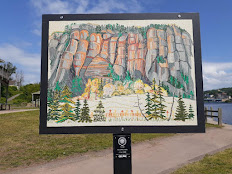





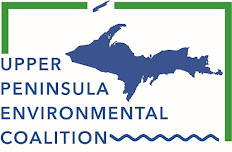
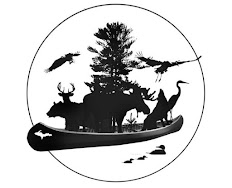
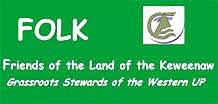
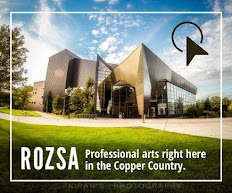

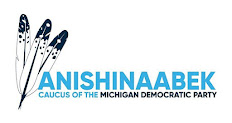
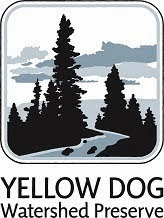















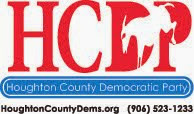




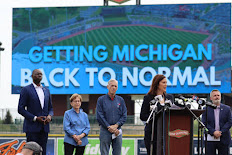




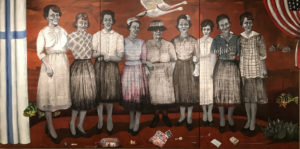
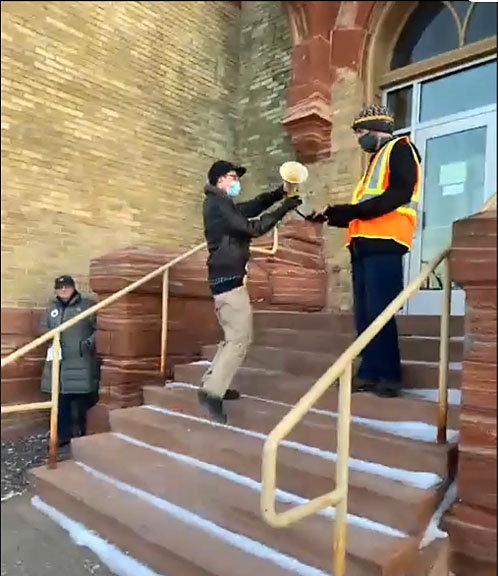




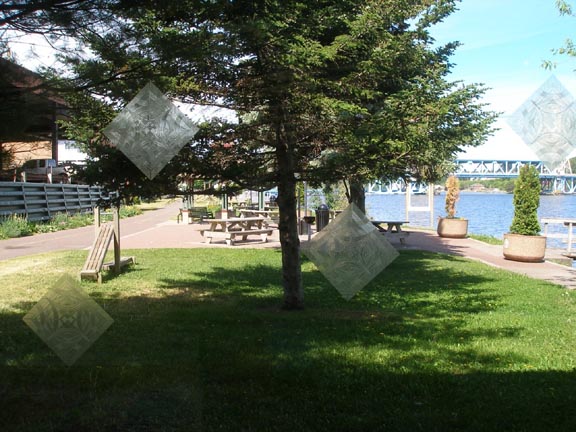







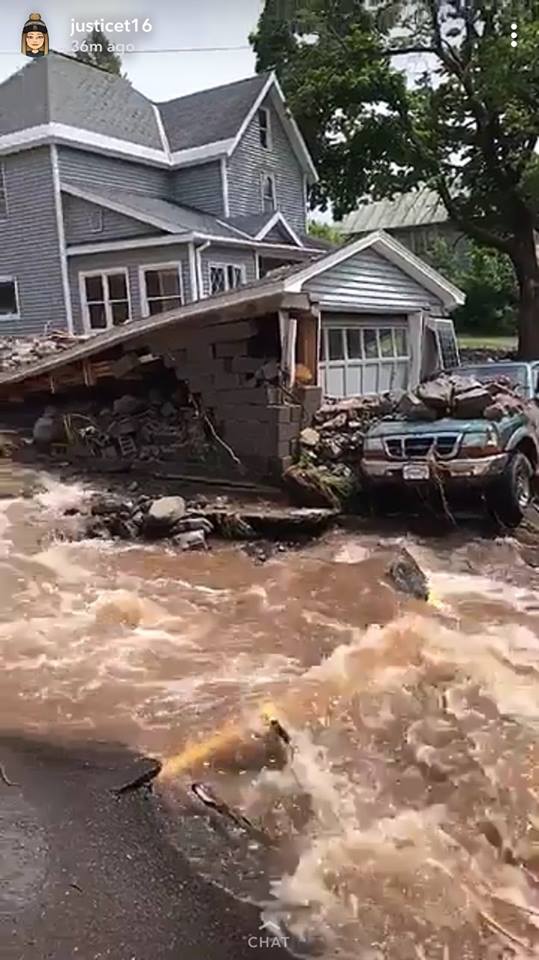


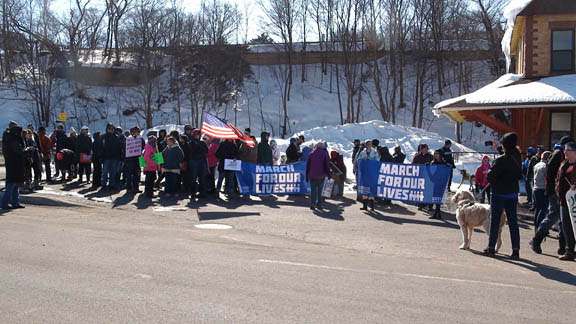
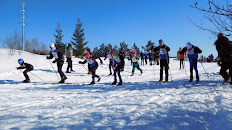

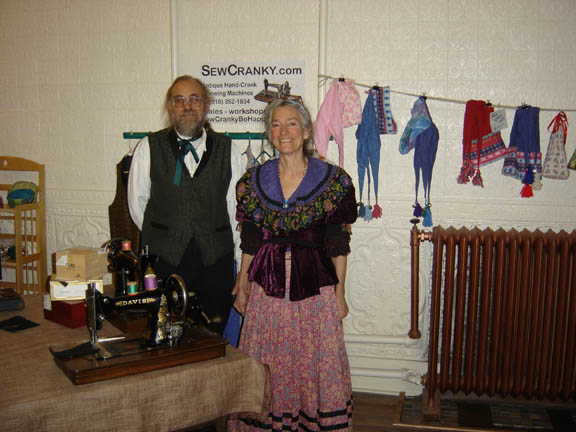
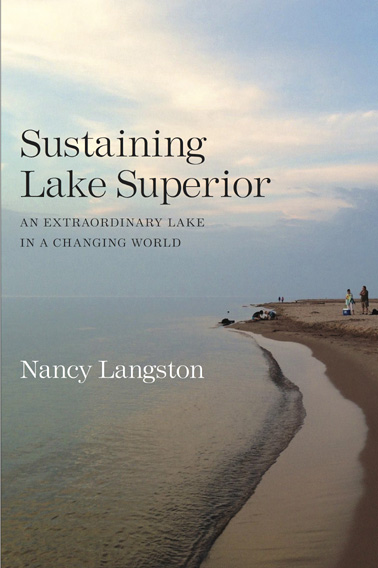








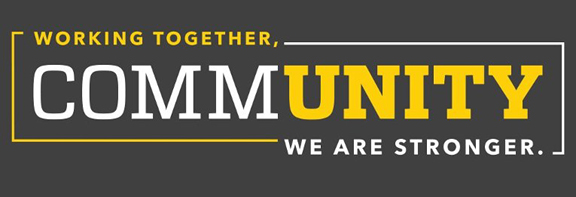
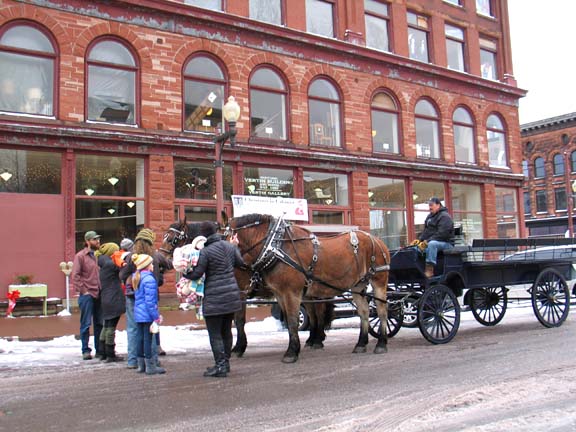

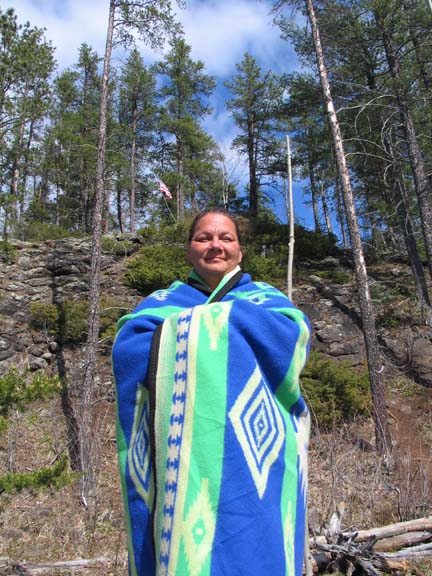


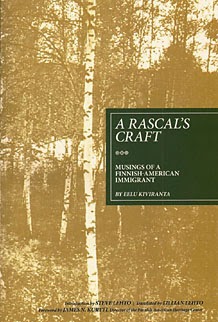



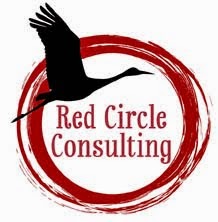




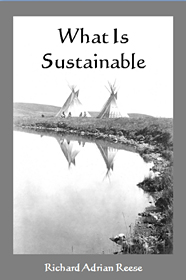






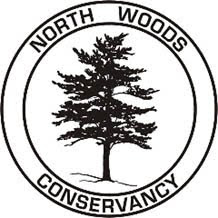


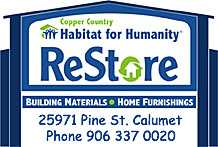






2 comments:
Great work, Michele. I read every word and listened to every video. As I'm sure everybody did who's reading this...
What comes through to me and I hope to everyone is that people ought to form a citizens group, not just in Lake Linden but from Houghton and all over the Keweenaw. Draw up a list of questions you want answered. Start holding public meetings, which hopefully the Mining Gazette will cover in detail...
Make a lot of trouble for the DEQ. (Look what they did in Flint. Read Time magazine's cover article.) Question whether the Michigan DEQ can be trusted to do a competent job protecting the public in anything! Demand the whole Torch Lake Superfund site be turned back to the federal EPA.
Get Michigan Senators in Washington to find money for stamp sands clean up -- as the toxic waste that it is, not as a "harmless substance," so voted by the Michigan legislature and Governor couple years ago. (What expertise do they have deciding what's toxic and what isn't?) Demand all stamp sand, PCBS, et al be cleaned up immediately. Maybe the stamp sands should be put into the many deep mining holes whence they came. Cost a lot to pump out the water first, I know. But it may be the best solution.
Start making trouble! Keweenaw people have been respectful and trusting far too long.
A genuine cleanup will cost tens of millions. Clean water is worth it! Not just for us and coming generations in the U.P. The rest of the country will become increasingly dependent on Great Lakes fresh water as the planet warms and oceans are more and more polluted.
Lake Superior is a national treasure and we're in charge of it while we live.
All the best, Mary Jane Williams, Lake Linden then Calumet, now snowbirding, I hope
Thanks for your comment, Mary Jane, and thanks for caring about the Keweenaw!
Post a Comment